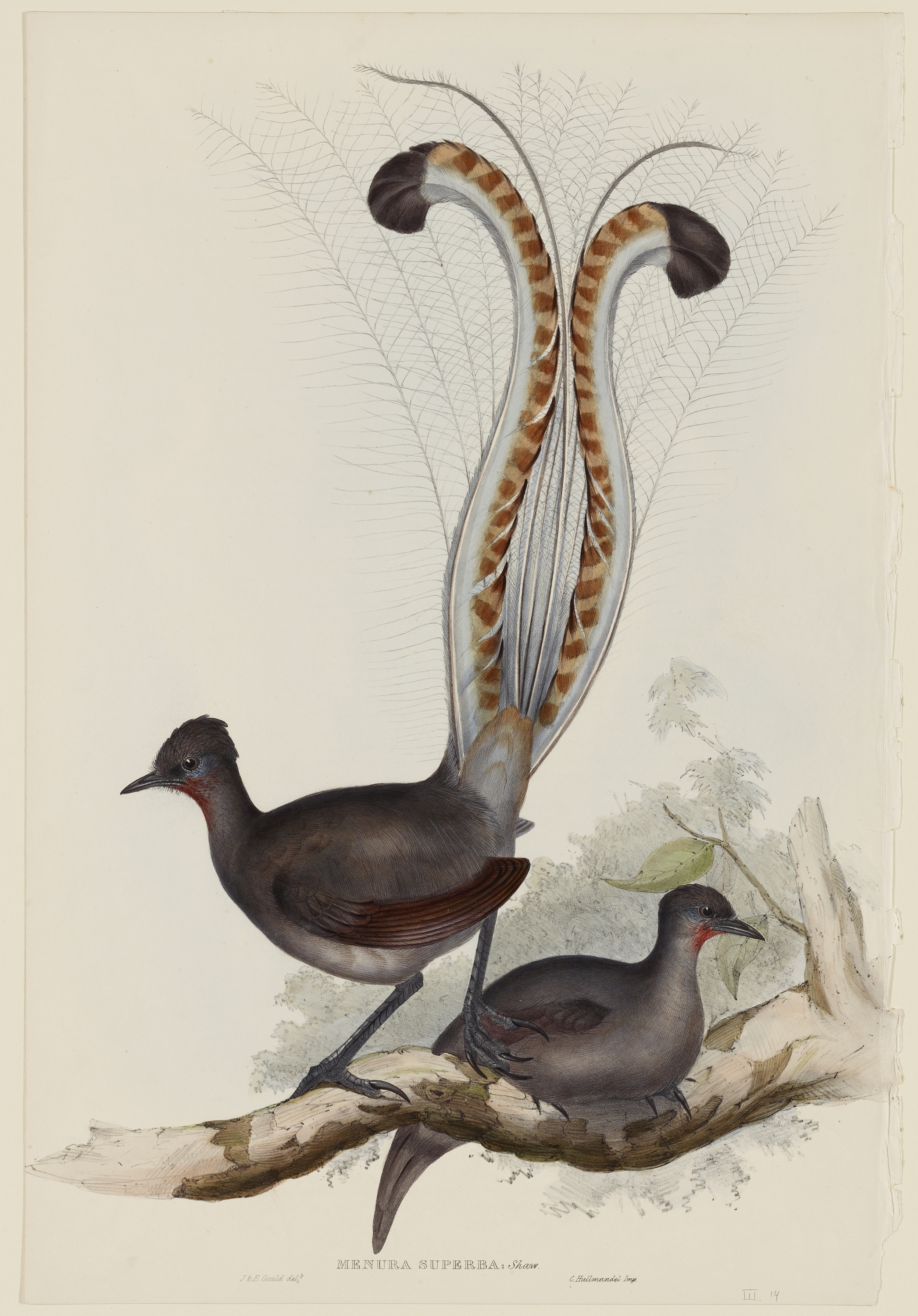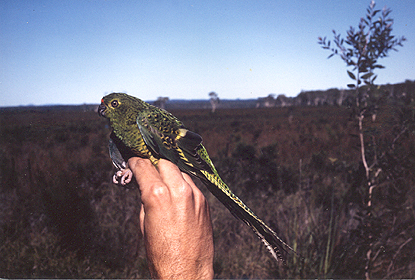|
Night Parrot
The night parrot (''Pezoporus occidentalis'') is a small parrot endemic to the continent of Australia. It has also been known as porcupine parrot, nocturnal ground parakeet, midnight cockatoo, solitaire, spinifex parrot and night parakeet. It is one of the most elusive and mysterious birds in the world, with no confirmed sightings of the bird between 1912 and 1979, leading to speculation that it was extinct. Sightings since 1979 have been extremely rare and the bird's population size is unknown, though based on the paucity of records it is thought to number between 50 and 249 mature individuals, and it is classified by the IUCN as a critically endangered species. A few sightings or recordings of its presence, with varying degrees of certainty, have occurred in the Pilbara region of Western Australia, south-western Queensland, the Lake Eyre basin in South Australia and the Northern Territory. However, some of the evidence produced by wildlife photographer John Young has been cal ... [...More Info...] [...Related Items...] OR: [Wikipedia] [Google] [Baidu] |
Elizabeth Gould (illustrator)
Elizabeth Gould, (; 18 July 1804 – 15 August 1841), was a British artist and illustrator at the forefront of the natural history movement. Elizabeth traveled and worked alongside her husband, naturalist and author John Gould. She produced illustrations and lithographs for ornithological works, including plates in Charles Darwin, Darwin's ''Zoology of the Voyage of H.M.S. Beagle, The Zoology of the Voyage of H.M.S. Beagle'' and the Goulds' seminal work, ''Birds of Australia (Gould), The Birds of Australia''. In total, Elizabeth is credited with at least 650 works. Life and artistic career Elizabeth was born on 18 July 1804 in Ramsgate, England to a military family. Little is known of her early life, however it is likely that Elizabeth underwent training in drawing and botany from a young age. In Victorian era, Victorian England, botany and natural history were part of the education of girls in middle-class English families. As Ann Moyal stated, "Cultivated women drew, walked, ... [...More Info...] [...Related Items...] OR: [Wikipedia] [Google] [Baidu] |
Pezoporus
''Pezoporus'' is a genus of parrot endemic to Australia. It contains two species: the night parrot (''P. occidentalis'') and the ground parrot (''P. wallicus'') which is divided into three subspecies. The night parrot was previously separated in a distinct genus, ''Geopsittacus''. The genus is part of the tribe Pezoporini and subfamily Platycercinae Platycercinae is a subfamily of birds belonging to the family Psittaculidae that inhabit Oceania. It consists of two tribes, the ground parrots and allies (Pezoporini) and the many species of broad-tailed parrot (Platycercini). Genera Tribe Pezo .... Species list *Genus ''Pezoporus'' References Bird genera Broad-tailed parrots {{parrot-stub ... [...More Info...] [...Related Items...] OR: [Wikipedia] [Google] [Baidu] |
Environment Protection And Biodiversity Conservation Act 1999
The ''Environment Protection and Biodiversity Conservation Act 1999'' (Cth) is an Act of the Parliament of Australia that provides a framework for protection of the Australian environment, including its biodiversity and its natural and culturally significant places. Enacted on 16 July 2000, it established a range of processes to help protect and promote the recovery of threatened species and ecological communities, and preserve significant places from decline. The Act is administered by the Department of Climate Change, Energy, the Environment and Water. Lists of threatened species are drawn up under the Act, and these lists, the primary reference to threatened species in Australia, are available online through the Species Profile and Threats Database (SPRAT). As an Act of the Australian Parliament, it relies for its constitutional validity upon the legislative powers of the Parliament granted by the Australian Constitution, and key provisions of the Act are largely ba ... [...More Info...] [...Related Items...] OR: [Wikipedia] [Google] [Baidu] |
Critically Endangered
An IUCN Red List critically endangered (CR or sometimes CE) species is one that has been categorized by the International Union for Conservation of Nature as facing an extremely high risk of extinction in the wild. As of December 2023, of the 157,190 species currently on the IUCN Red List, 9,760 of those are listed as critically endangered, with 1,302 being possibly extinct and 67 possibly extinct in the wild. The IUCN Red List provides the public with information regarding the conservation status of animal, fungi, and plant species. It divides various species into seven different categories of conservation that are based on habitat range, population size, habitat, threats, etc. Each category represents a different level of global extinction risk. Species that are considered to be critically endangered are placed within the "Threatened" category. As the IUCN Red List does not consider a species extinct until extensive targeted surveys have been conducted, species that a ... [...More Info...] [...Related Items...] OR: [Wikipedia] [Google] [Baidu] |
IUCN Red List
The International Union for Conservation of Nature (IUCN) Red List of Threatened Species, also known as the IUCN Red List or Red Data Book, founded in 1964, is an inventory of the global conservation status and extinction risk of biological species. A series of Regional Red Lists, which assess the risk of extinction to species within a political management unit, are also produced by countries and organizations. The goals of the Red List are to provide scientifically based information on the status of species and subspecies at a global level, to draw attention to the magnitude and importance of threatened biodiversity, to influence national and international policy and decision-making, and to provide information to guide actions to conserve biological diversity. Major species assessors include BirdLife International, the Institute of Zoology (the research division of the Zoological Society of London), the World Conservation Monitoring Centre, and many Specialist Groups w ... [...More Info...] [...Related Items...] OR: [Wikipedia] [Google] [Baidu] |
Triodia (grass)
''Triodia'' is a large genus of hummock grass endemic to Australia. The species of this genus are known by the common name spinifex, although they are not a part of the coastal genus '' Spinifex''. Many soft-leaved ''Triodia'' species were formerly included in the genus ''Plectrachne''. ''Triodia'' is known as ''tjanpi'' (grass) in central Australia, and have several traditional uses amongst the Aboriginal Australian peoples of the region. A multiaccess key (SpiKey) is available as a free application for identifying the ''Triodia'' of the Pilbara (28 species and one hybrid). Description ''Triodia'' species are perennial Australian hummock grasses that grow in arid regions. Their leaves (30–40 centimetres long) are subulate ( awl-shaped, with a tapering point). The leaf tips, which are high in silica, can break off in the skin, leading to infections. Uses Spinifex has had many traditional uses for Aboriginal Australians. Several species were (and are) used extensively ... [...More Info...] [...Related Items...] OR: [Wikipedia] [Google] [Baidu] |
Eucalyptus
''Eucalyptus'' () is a genus of more than 700 species of flowering plants in the family Myrtaceae. Most species of ''Eucalyptus'' are trees, often Mallee (habit), mallees, and a few are shrubs. Along with several other genera in the tribe Eucalypteae, including ''Corymbia'' and ''Angophora'', they are commonly known as eucalypts or "gum trees". Plants in the genus ''Eucalyptus'' have bark that is either smooth, fibrous, hard, or stringy and leaves that have oil Gland (botany), glands. The sepals and petals are fused to form a "cap" or Operculum (botany), operculum over the stamens, hence the name from Greek ''eû'' ("well") and ''kaluptós'' ("covered"). The fruit is a woody Capsule (botany), capsule commonly referred to as a "gumnut". Most species of ''Eucalyptus'' are Indigenous (ecology), native to Australia, and every state and territory has representative species. About three-quarters of Australian forests are eucalypt forests. Many eucalypt species have adapted to wildfire, ... [...More Info...] [...Related Items...] OR: [Wikipedia] [Google] [Baidu] |
Triodia (plant Genus)
''Triodia'' is a large genus of hummock grass endemic to Australia. The species of this genus are known by the common name spinifex, although they are not a part of the coastal genus '' Spinifex''. Many soft-leaved ''Triodia'' species were formerly included in the genus ''Plectrachne''. ''Triodia'' is known as ''tjanpi'' (grass) in central Australia, and have several traditional uses amongst the Aboriginal Australian peoples of the region. A multiaccess key (SpiKey) is available as a free application for identifying the ''Triodia'' of the Pilbara (28 species and one hybrid). Description ''Triodia'' species are perennial Australian hummock grasses that grow in arid regions. Their leaves (30–40 centimetres long) are subulate ( awl-shaped, with a tapering point). The leaf tips, which are high in silica, can break off in the skin, leading to infections. Uses Spinifex has had many traditional uses for Aboriginal Australians. Several species were (and are) used extensively ... [...More Info...] [...Related Items...] OR: [Wikipedia] [Google] [Baidu] |
Ground Parrot
The ground parrot (''Pezoporus wallicus'') is a parrot endemic to Australia. It is one of only four ground-dwelling parrots in the world, the others being the closely related night parrot (''Pezoporus occidentalis''), the Antipodes parakeet (''Cyanoramphus unicolor''), and the flightless kākāpō (''Strigops habroptilus'') from New Zealand. The colouration of the two ''Pezoporus'' species and the kākāpō is similar – yellowish green with darker barring, somewhat reminiscent of the head and back of the wild-type budgerigar. When disturbed, a ground parrot flies swiftly just above the ground before dropping back into the vegetation. The presence of the bird is often only revealed by its characteristic dusk and dawn call, a clear whistling sequence of notes which rise in pitch before fading. It is silent in flight.The IOC World Bird Listcurrently recognises three subspecies; the eastern ground parrot (subsp. ''wallicus''), the western ground parrot or Kyloring (subsp. ''fl ... [...More Info...] [...Related Items...] OR: [Wikipedia] [Google] [Baidu] |
Eastern Ground Parrot
''Pezoporus'' is a genus of parrot endemic to Australia. It contains two species: the night parrot (''P. occidentalis'') and the ground parrot (''P. wallicus'') which is divided into three subspecies. The night parrot was previously separated in a distinct genus, ''Geopsittacus''. The genus is part of the tribe Pezoporini and subfamily Platycercinae Platycercinae is a subfamily of birds belonging to the family Psittaculidae that inhabit Oceania. It consists of two tribes, the ground parrots and allies (Pezoporini) and the many species of broad-tailed parrot (Platycercini). Genera Tribe Pezo .... Species list *Genus ''Pezoporus'' References Bird genera Broad-tailed parrots {{parrot-stub ... [...More Info...] [...Related Items...] OR: [Wikipedia] [Google] [Baidu] |





